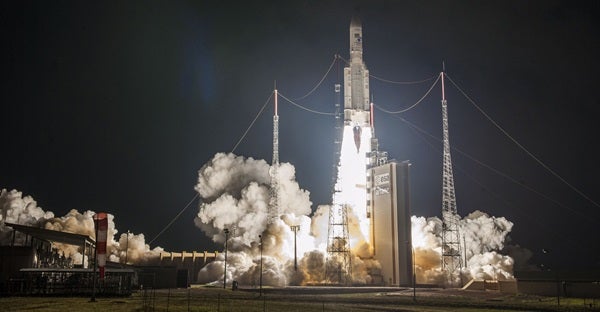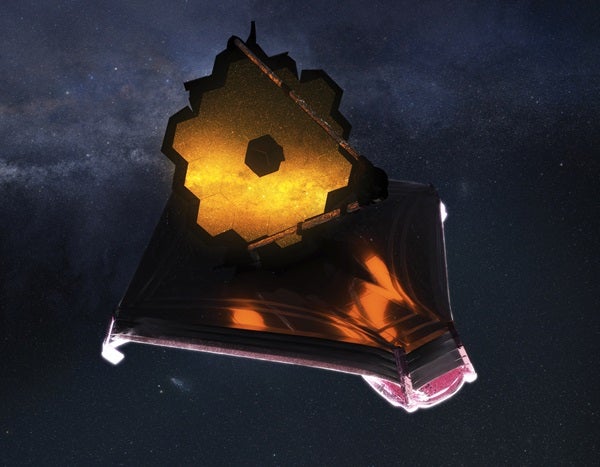NASA officials have acknowledged that the scheduled October launch of the James Webb Space Telescope (JWST) could be pushed back yet again, according to a report from the Government Accountability Office (GAO) released May 13. But this time, the issue isn’t with the telescope.
Instead, it’s with the usually reliable, European-produced Ariane 5 rocket, which is slated to carry JWST aloft on October 31 from Kourou, French Guiana. “According to NASA project officials, the JWST launch date will likely be delayed beyond October 2021 due to anomalies discovered in the JWST launch vehicle,” says the report.
The issue lies with the Ariane 5’s fairing, the nose cone that protects its payload as it accelerates up through the atmosphere. Once the vehicle reaches space, the fairing separates from the rocket in two pieces and falls away.
But in two recent launches, the rocket experienced “unexpected vehicle accelerations” during fairing separation, according to the GAO report. As a result, Ariane 5 launches have been postponed while the European Space Agency and Arianespace, the rocket’s manufacturer, investigate the issue.
The bright side
The good news is that any potential delay may only be a matter of weeks, rather than months or years. The JWST launch will not go ahead until an Ariane 5 has flown and successfully demonstrated a fix to the issue, says the report. But there are two Ariane 5 launches — planned for June and August of 2021— ahead of JWST’s scheduled October flight.
Although NASA has not officially announced any revision to JWST’s current October 31 launch date, recent public comments reported by Space News indicate officials expect it will take roughly four months to prepare JWST after Ariane 5 is again approved for flight. So, if the June launch shows the fairing issue is resolved, JWST could be set to fly in November.
A delay of a few weeks — or even a few months — would be far from the worst delay James Webb has faced so far. As the long-awaited successor to the Hubble Space Telescope, JWST is already seven years behind its initial launch target of June 2014. Furthermore, its budget has nearly doubled, from $5 billion to an estimated $9.7 billion. In July 2020, when NASA pushed back JWST’s launch from March 2021 to October 2021, it cited the COVID-19 pandemic, “as well as technical challenges.”
Encouragingly, the GAO report found that work on JWST is still steadily moving forward, and “has made significant technical progress” since the most recent launch delay. For instance, earlier this week, the telescope passed a milestone as workers commanded it to unfurl its golden, 6.5-meter primary mirror — the last time it will do so on Earth. The test was the final preflight check of the intricate deployment process it will undergo when it reaches space.
“The completion of this last test on its mirrors is especially exciting because of how close we are to launch later this year,” said Ritva Keski-Kuha, JWST’s deputy optical telescope element manager, in a news release. Considering the latest issues with the Ariane 5, though, it seems the JWST team may have to wait just a little bit longer than they would like.











